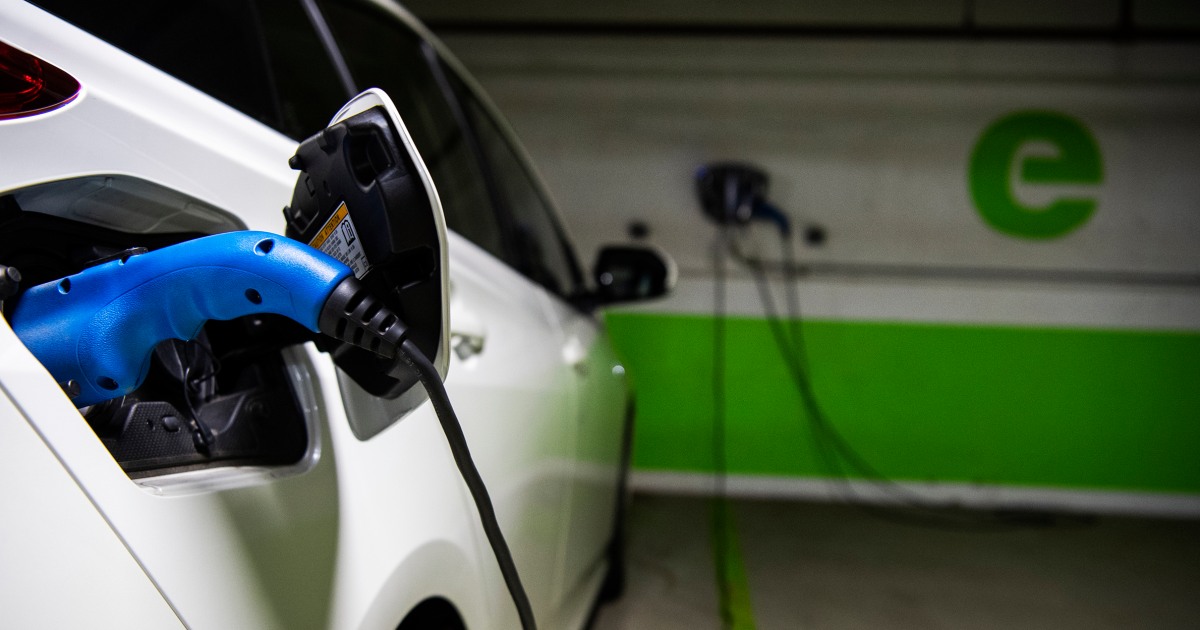
Toyota will invest $1.3 billion to build a new electric vehicle battery “megasite” near Greensboro, North Carolina, a facility set to employ 1,750 workers when it opens in 2025, the automaker announced Monday.
Initially dependent upon overseas suppliers, automakers are now shifting their strategy, ramping up production of electric vehicles and localizing battery production. The shift means U.S. capacity could grow enough to power 10 million vehicles or more by 2030.
While the move reflects a measure of political pressure, manufacturers also want to sidestep the logistical nightmare they have faced this year with shortages of mostly foreign-made semiconductors.
“The future of mobility is electrification and the Greensboro-Randolph Megasite is the ideal location to make that future a reality,” Ted Ogawa, CEO of Toyota Motor North America, said Monday, hailing the area’s infrastructure and skilled workforce.
The new factory will launch with four separate lines, each producing enough lithium-ion batteries to power 200,000 electrified vehicles, the automaker said. There will be room to add two lines later, bringing total capacity up to 1.2 million vehicles per year.
Exactly what that means wasn’t revealed, however. Where some competitors, including General Motors and Volkswagen, are shifting entirely to battery-electric vehicles, Toyota plans a mixed approach.
Congress is considering an extra $500 in tax credits for electric vehicles with U.S.-made batteries.
By 2030, battery-electric vehicles are forecast to make up 15 percent of its sales — about the same as traditional gas models. The Japanese giant was a pioneer in the development of electrification, and expects traditional and plug-in hybrids to make up about two-thirds of its volume. Hydrogen fuel-cell would make up the rest.
Long-range electric vehicles like the upcoming Toyota bZ4X require anywhere from 60 to more than 100 kilowatt-hours of batteries. Conventional hybrids, such as the Toyota Prius, get by on just a couple of kWh. Plug-in hybrids come in somewhere in between.
Toyota is by no means the only automaker adding battery production. In September, Ford said it will erect three lithium-ion battery plants: two in Kentucky and a third near Memphis, part of the new Blue Oval City, a 6-square-mile complex where it will build the next-generation F-150 Lightning electric pickup. All together, they will have 129 gigawatt-hours of annual capacity — enough for 1 million electric trucks, Ford CEO Jim Farley told NBC News.
General Motors, meanwhile, just opened its first battery plant in Lordstown, Ohio, to supply batteries for the new GMC Hummer pickup. Three other North American battery plants will follow.
GM plans to have 30 BEVs on sale by 2025. By comparison, only 15 of the 70 electrified vehicles Toyota is planning to sell by 2025 will be pure BEV. The rest will be hybrids of one form or another.
Tesla operates the massive Gigafactory in Reno, Nevada, and is adding capacity at a new assembly plant in Texas.
Stellantis and Mercedes-Benz are among other manufacturers signaling plans to add battery plants in North America. Battery suppliers such as South Korea’s LG Chem are staking out a presence. Some analysts anticipate total capacity could top a terawatt-hour, or 1,000 gigawatt-hours, by 2030 — enough for 10 million BEVs.
Until now, most automotive batteries have come from Asia, primarily China and South Korea.
“What we have seen over the last 24 months is automakers getting much more proactive about building their own batteries as expectations for EV” sales growth, said Stephanie Brinley, principal auto analyst with IHS Markit.
Automakers want to move production as close as possible to their assembly plants, Brinley added, “because the supply chain has become a real problem,” as the ongoing shortages of semiconductor chips has demonstrated.
“Building things close to where you need them makes a lot of sense,” Brinley said. “You really don’t want to rely on a supply chain where all your batteries are shipped.”
There’s also a political angle. President Joe Biden has said he wants to reduce dependence on China, and Congress is considering revised sales incentives for electric vehicles, including an extra $500 in tax credits for those with U.S.-made batteries.
But automakers do face challenges getting into the battery business. Among other things, they’re racing to tie down supplies of key raw materials that also may come from abroad, such as lithium, nickel and cobalt.
Over the longer term, manufacturers need to ensure their new plants have the flexibility to switch over to next-generation batteries like solid-state cells. That technology promises to deliver longer range, shorter charging times and lower costs.
Ford officials believe they will be able to convert their new battery plants once solid-state technology is ready for mass production, and Toyota, GM and other manufacturers are also designing their plants to switch over.
Nissan last month said it aims to start producing solid-state batteries in 2026 and most of its competitors hope to follow before the end of the decade.
Source: | This article originally belongs to Nbcnews.com










